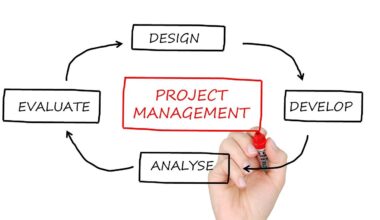How to Use Grant Databases to Support Nonprofit Program Expansion
Grant databases are invaluable tools for nonprofits seeking funding opportunities. These platforms provide access to a wealth of information, including details on grants available from various sources. They often constitute databases maintained by government agencies, foundations, and other organizations committed to philanthropic efforts. Nonprofits can leverage these databases to identify grants that align with their missions. The process begins with understanding the specific needs of your organization. Begin by identifying your program expansion goals, whether they involve community outreach, educational initiatives, or infrastructure development. Each of these objectives can have dedicated funding sources that can be found in grant databases. Additionally, create user profiles to tailor searches according to category, geographical area, and target demographics. By doing so, organizations can quickly access relevant grants, refining their search process. Furthermore, many databases offer advanced search functionalities that enable nonprofits to filter options effectively. This targeted approach minimizes time spent on unrelated opportunities. As you engage with these databases, be sure to take notes on deadlines and requirements for easy tracking and organization of your grant application process.
Once you’ve accessed grant databases, the next step is to analyze potential grants in detail. Look for information regarding eligibility criteria, application processes, and deadlines. Each grant will have specific requirements related to project types or target populations. Understanding these specifications is vital to ensuring your application aligns with funder expectations. Make sure to note how your program can meet these objectives while fitting within the funder’s mission. Additionally, review frequently asked questions and insights from successful applicants for factors that may enhance your proposal. Look for examples of past funded projects within the databases, as these can provide context for what successful applications entail. Also, pay attention to the grant review process; this may include scoring rubrics that outline how applications will be evaluated. Such insights can guide you in crafting a compelling proposal. Utilize filters to search for grants that not only match your programmatic needs but also provide realistic funding amounts. The clearer your understanding of the grant requirements and processes, the better your chances for success through informed applications, leading to meaningful program expansion.
Building Relationships with Funders
Aside from identifying potential funding opportunities, grant databases can facilitate relationship-building with potential funders. Many databases allow users to access contact information for grant decision-makers or representatives of funding organizations. This can be beneficial for nonprofit organizations looking to establish connections before submitting applications. Engaging with funders through emails or scheduled meetings showcases your dedication to transparency and partnership. Additionally, it provides an opportunity to clarify any uncertainties about the grant application process. In this regard, build a rapport by expressing your organization’s commitment to addressing community needs. Furthermore, participate in funding organization events or webinars listed on the databases, which can enhance your visibility and networking opportunities. When implementing this strategy, ensure that your engagement is meaningful and respectful of the funders’ time and efforts. Refrain from asking direct questions regarding funding outcomes initially. Instead, focus your discussions on aligning shared goals and showcasing your organization’s impact. By cultivating mutual understanding and respect, organizations can create lasting partnerships with funders, which can lead to increased funding opportunities and program growth in the future.
Furthermore, as you build your relationship with potential funders, consider the nuances of collaboration that grant databases suggest. Many organizations provide resources about collaborative grant proposals, indicating that partnerships often yield stronger applications. These collaborations can vary from merging capacities to pooling resources and sharing insights between organizations. As you peruse funding opportunities, take note of grants that encourage partnerships. Government grants, in particular, often prefer applications that highlight collaborative approaches, recognizing the positive outcomes of combined efforts. Additionally, featuring partnerships can expand your network, introduce new expertise into your program expansion, and build community trust. Include references to collaborative work in your application narratives. Highlight contributions and successful outcomes as a result of joint efforts. Moreover, fully describe the roles of each partner in the project to demonstrate a comprehensive understanding of responsibilities and mutual benefits. Highlighting collaborations can be a strategic advantage in securing grant funds, as reviewers will appreciate the depth of insight and comprehensive strategy presented by multifaceted proposals. Make collaborative engagement a priority, as it enriches your funding strategy and enhances program impact.
Preparing Strong Grant Applications
Once potential grants have been identified and relationships established, the next step in utilizing grant databases is drafting strong applications. Prioritize clarity and conciseness in your application materials. Review any specific formatting requirements outlined in the grant guidelines. Ensure that your application strongly outlines your program objectives, anticipated outcomes, and budget justifications. Using a framework such as the Logic Model can help to clearly present how your program will operate and the impact it aims to achieve. Focus on illustrating the issues your program addresses, how it will implement necessary interventions, and why it’s worthy of funding. To enhance credibility, include statistical data and relevant evidence to support claims. Incorporating testimonials or quotes from community members can also strengthen your narrative. Be mindful to address how funds will be utilized for program expansion and evaluate potential long-term effects. Ensure that your proposed budget aligns with stated objectives, protecting funders’ interests and increasing your proposal’s likelihood of approval. Thoroughly review and edit your applications, ensuring that they are free from errors before submission.
Also, consider creating a grant application timeline that delineates all significant deadlines for submissions, follow-ups, and evaluations. Maintain a focus on organization throughout the entire grant application process. This timeline will not only help you track your progress but also ensure that no steps are overlooked during the application phase. Utilizing spreadsheets or project management tools can help manage multiple applications concurrently, allowing teams to work collaboratively to refine each proposal efficiently. Regularly evaluating your timeline against deadlines will enable your team to pivot quickly as needed. Adjust plans to accommodate unexpected obstacles, and ensure that all materials are drafted well in advance of submission dates. Furthermore, sharing status updates across your team can promote accountability while encouraging a spirit of collaboration. Make it a point to celebrate small successes within the team as they arise. Recognizing hard work and dedication is invaluable, as it fosters a positive culture around grant-seeking efforts. The more effective your internal workflows, the better positioned your organization will be to secure funding through grant databases.
Leveraging Outcomes for Future Funding
After successfully securing a grant, it’s crucial to leverage those outcomes for future funding opportunities. Utilize grant databases to showcase the progress and achievements from previous projects in your applications for additional funding. Highlight quantifiable impacts and key success stories to capture the interest of prospective funders. Many grant applications will request information about your organization’s capacity to deliver results, and demonstrating a record of achievement will build credibility. Additionally, consider crafting detailed reports outlining program outcomes. Share these reports with funders and utilize them in presentations. Regular updates on the ongoing work funded by previous grants can foster trust and transparency. Consistent communication will help solidify ongoing relationships with your funders, reinforcing your organization’s reputation as a reliable partner. Always express gratitude to funding sources and share positive feedback from beneficiaries. Crafting a newsletter or report dedicated to program successes can serve as an efficient method of communication. This approach not only keeps funders informed but also reinforces your organization’s commitment to impactful community service while enhancing the likelihood of renewed funding opportunities.
In summary, utilizing grant databases efficiently is integral to nonprofit program expansion. To maximize the potential provided by these tools, engage in detailed research and maintain strong connections with funders. Analyze opportunities thoroughly and collaborate with partners to enhance proposals. Effectively communicate your program’s impacts through powerful grant applications that are meticulously prepared and reviewed. In addition, create a structured timeline to track applications and maintain organization throughout the process. After securing funding, assure positive relations by providing feedback and showcasing program outcomes to ensure potential ongoing support. Lastly, evolve your strategies based on learned experiences and shift approaches as needed for future submissions. The dynamism associated with grant applications will serve to enhance your organizational effectiveness and capacity to grow. By emphasizing clarity, collaboration, and communication, organizations will maximize their success when utilizing grant databases. Building fruitful relationships with funders and exploring diverse opportunities paves the way toward sustainable funding solutions. Nonprofits can nurture project vitality, attain long-lasting impact, and continue thriving in their missions with the right commitment and structured methodologies.


